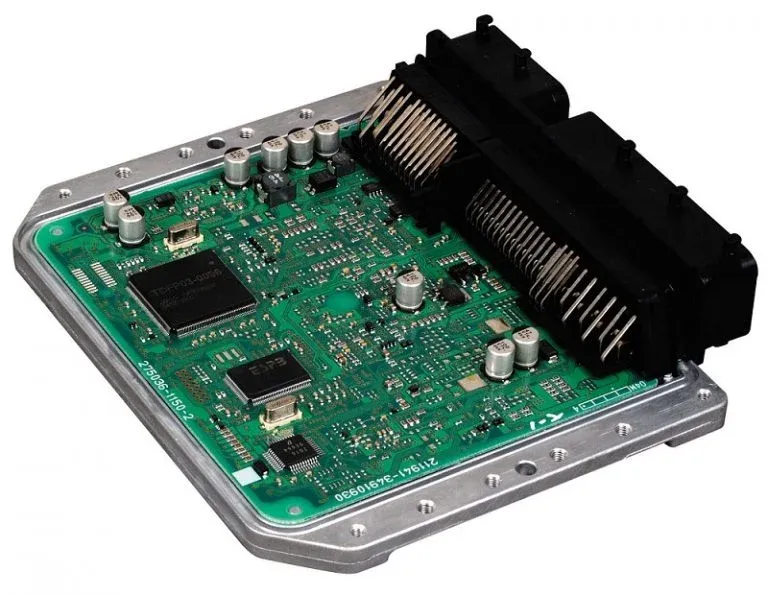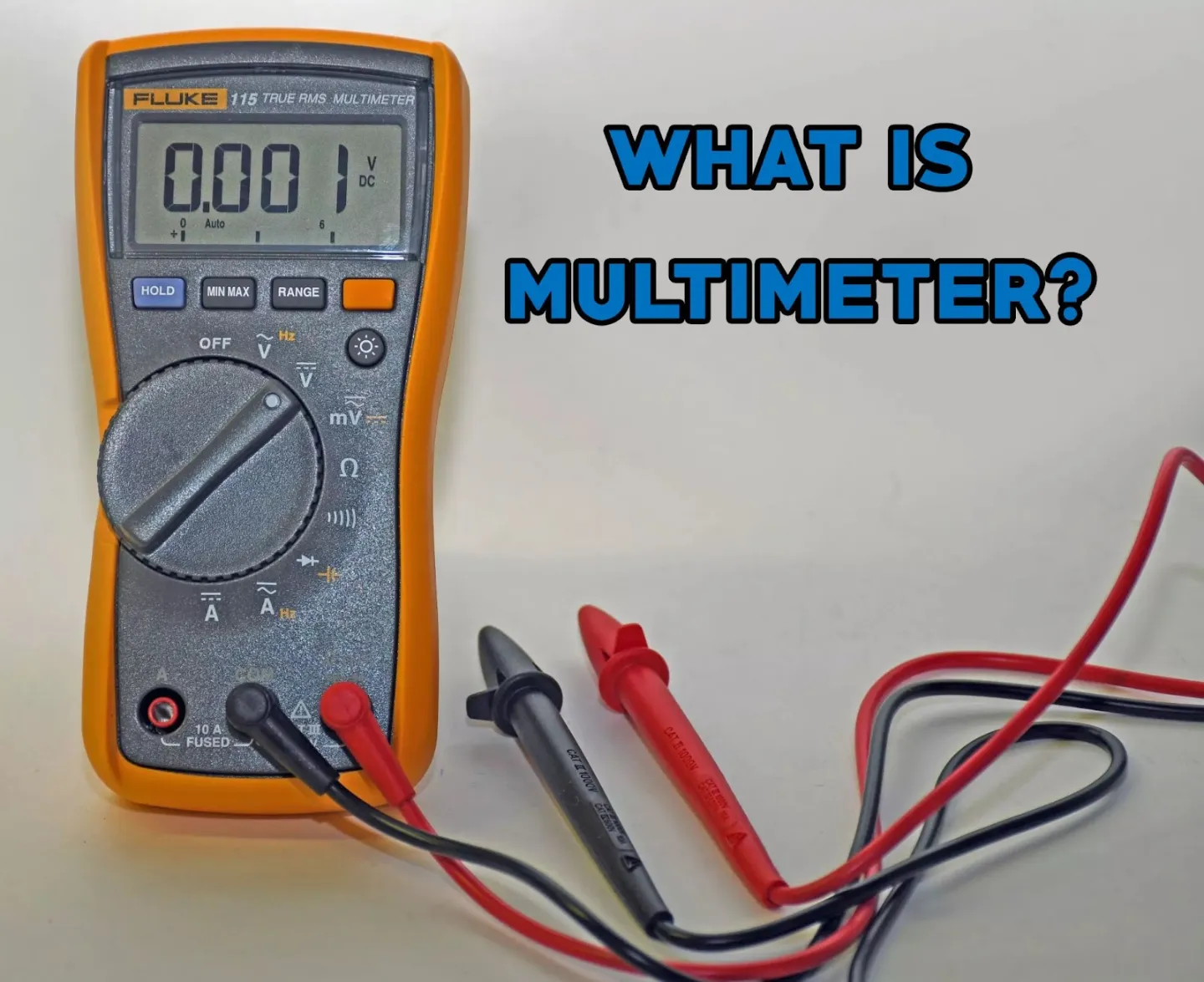How to Test ECU with Multimeter: Complete Guide

How to Test ECU with Multimeter
How to Test ECU with Multimeter? You've come to the right place if you're looking for this answer. A multimeter is used to test an ECU in this blog post. In order to complete this task, you will need some basic tools and equipment. As well as providing some helpful tips, we will also give you a few things to think about. It's time to get started!
What Is an ECU?

What is an ECU?
ECU stands for engine control unit. It is this component that controls your car's engine. In the event that the system malfunctions, you will have trouble operating your vehicle. There is a possibility that it won't even run or that it will perform painfully slowly.
Sensor data is processed by microprocessors installed in the engine. Among the hardware components used to accomplish this are ceramic substrates, circuit boards, and electronic fittings. There is a microcontroller chip on this circuit board that stores software and can be reprogrammed via a download.
Analog and digital ECUs are two types.
Microprocessors govern current flow in digital ECUs, whereas resistors and capacitors govern current flow in analog ECUs. Check the service manual for your car or call the manufacturer if you are unsure what type of ECU you have.
Multimeters can be used to determine if your ECU receives the required power to function properly if you attach one to it. Having trouble using your multimeter? Nothing to worry about. Throughout the process, we will guide you step by step.
Engine Control Units: How Do They Work?
The engine control unit calculates the optimal air-fuel mixture and ignition timing based on information provided by sensors throughout the car. Fuel injectors and ignition systems are controlled based on this information.
Sensor input data is constantly monitored by the ECU, including:
Speed of the engine (RPM)
Position of the throttle
Manifold absolute pressure (MAP)
Temperature of the intake air
Signal from the oxygen sensor (used to control fuel mixture)
Signal from the knocking sensor (used to control ignition timing)
This input data is used by the ECU to calculate the best mixture of air and fuel and to determine the best ignition timing. A fuel injector and ignition system are controlled based on this information. As well as controlling air-fuel mixtures and ignition timings, the ECU also controls other engine functions. The performance of the entire engine can be affected by a bad ECU and drivability issues can arise as a result.
What is a Multimeter?

What is a Multimeter?
Voltage, current, and resistance can all be measured with a multimeter. Electronic components, such as an ECU, can also be tested with this tool.
The dial, the probes, and the meter itself are the three basic parts of all multimeters. Measurements are displayed by the meter, while components are touched or held by the probes. Multimeter ranges can be adjusted via the dial.
Digital and analog multimeters are both types of multimeters. An analog multimeter displays the measurement using a needle, while a digital multimeter uses digits. Capacitance measurement and frequency detection are also available on some multimeters. Almost any electronics store or online retailer sells multimeters.
How to Test ECU with Multimeter: Detail Guide
If you fail to know how to test an ecu with a multimeter, then don't worry about it. It can be used to test an ECU to determine if it is faulty. An ECU can be tested using a multimeter by following a few simple steps.
The power supply, ground, and signal input/output can all be analyzed with a multimeter.
Electrical current is measured by the ground, not the power supply, which provides voltage to the ECU. Vehicle components and the ECU communicate through input/output signals.
By checking two points on the multimeter for continuity, you can test the power supply. Check the polarity of the power supply with the multimeter set to DC voltage. The red lead of the multimeter should be connected to the power supply, while the black lead should be placed on the ground.
With a multimeter, you can also test the ground. Check the polarity of the ground by setting the meter to continuity. Make sure the ground lead is touching the vehicle, and the other lead is touching any metal part. A reading will be recorded if there is continuity.
An understanding of how input/output signals work is necessary for testing them. It is possible to identify the pins on the ECU using the diagram on most multimeters. You can determine whether there is a problem with the ECU by measuring the voltage and resistance of these signals.
Step-By-Step
If you want to know How to Test ECU with Multimeter, then don't worry, you can do it by following these steps:
Remove the ignition key from your car and turn it off
It's usually near the engine where you'll find the ECU
Your car may have a single or two connectors for connecting the battery to the ECU.
The negative battery terminal should be connected to the black probe of the multimeter, and the positive terminal to the red probe
Set the voltage reading on the multimeter
Several minutes after starting your car, let it run
Use a multimeter to measure the voltage. In the range of 12 to 16 volts, it should be
Your ECU needs to be replaced if it shows a voltage reading outside this range.
Symptoms of a Bad ECU
ECU failure can be indicated by a few common symptoms. The following symptoms are present:
Unusual Behavior From Engine
It may happen that the engine behaves erratically or abnormally if your vehicle's ECU is damaged. There are a number of ways in which this can occur, including reduced power, poor acceleration, stalling, or misfiring. A mechanic should be able to check the ECU of your car if you notice any engine problems.
The engine light is on
A malfunctioning ECU is often characterized by an illuminated Check Engine Light. The engine control system might be malfunctioning if the light is constantly on. Check engine lights can be triggered by a bad ECU in your vehicle, which struggles to control the engine.
Increased Emissions
In addition to increased emissions, a bad ECU is another sign of a problem. A failing ECU can increase emissions because the ECU controls the engine. A bad ECU may also result in more smoke coming from your car's exhaust pipe than usual.
Faqs
Question 1: How to test the ECU?
Answer: The electrical system and sensors in a car can be simulated by bench tests when testing your ECU. In addition to communicating with your ECU, you can monitor its parameters, codes, and outputs using software tools like an ECU simulator or a diagnostic scanner.
Question 2: If an ECU isn't tested with a multimeter, what are the risks?
Answer: You run the risk of damaging your ECU if you don't test it with a multimeter. Repairs or even replacements may be necessary as a result. Your warranty may also be voided if you do not test your ECU. Testing your ECU shouldn't just be done with multimeters. An oscilloscope is another useful diagnostic tool. Any technician who works on ECUs must have a multimeter, however.
Question 3: Is there a way to prevent ECU faults?
Answer: Maintenance and servicing of an ECU are the best ways to prevent faults. Maintain the right level of oil and coolant in your radiator. Multimeter testing of your ECU is also recommended. Be sure to check the engine mounts and fill up the brake fluids. Doing all these things will ensure the longevity of your ECU.
Question 4: Faulty ECU fuses: what happens?
Answer: It is necessary to replace the ECU fuse if it is blown. In addition to not starting the engine, a blown fuse can cause the car to stall. Therefore, it is crucial that the problem is resolved as soon as possible. Connect the terminals of the battery first. A short circuit will not occur as a result of this. The faulty fuse should be removed from the fuse box. Make sure the fuse is not damaged. Damaged fuses should be replaced.
Wrapping Up
Electrical work requires the use of multimeters. Continuity, resistance, voltage, and current can be checked on circuits and components with these tools. ECU testing is necessary if, for example, your car has trouble starting or isn't running correctly.
If the ECU has a voltage issue or a resistance issue, you can check those with a multimeter to see what is wrong. The purpose of this article is to show you how to test ECU with Multimeter. This information is provided in the hope that it will be helpful to you. A multimeter can be used to test an ECU. Have you tried it? Comment below with your thoughts.
Related Articles
How to Test ECU with Multimeter: Complete Guide
Multimeter Not Reading Current [How to Fix]
Multimeter Not Reading DC Voltage: How to Fix it?
Transformer Core Faults: Hazards, Causes, Types, Testing, and Remediation
Exploring Testing Methods: Types, Pros and Cons
What Retardation Test is:Everything You Need to Know
How to Test Automotive Relays (Guide)
NPN VS PNP BJT Transistor: Common Knowledge
The Ultimate Guide to CR1220 Battery
What are Audio Transformers for?
Semaphore in Embedded System
Deciphering Variances: Semiconductor vs Microchip vs Integrated Circuit
How Does a Resistor Work [Fully Explained]










